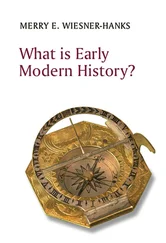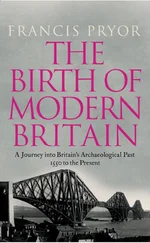R. Nisbet Bain - The Cambridge Modern History
Здесь есть возможность читать онлайн «R. Nisbet Bain - The Cambridge Modern History» — ознакомительный отрывок электронной книги совершенно бесплатно, а после прочтения отрывка купить полную версию. В некоторых случаях можно слушать аудио, скачать через торрент в формате fb2 и присутствует краткое содержание. Жанр: unrecognised, на английском языке. Описание произведения, (предисловие) а так же отзывы посетителей доступны на портале библиотеки ЛибКат.
- Название:The Cambridge Modern History
- Автор:
- Жанр:
- Год:неизвестен
- ISBN:нет данных
- Рейтинг книги:4 / 5. Голосов: 1
-
Избранное:Добавить в избранное
- Отзывы:
-
Ваша оценка:
- 80
- 1
- 2
- 3
- 4
- 5
The Cambridge Modern History: краткое содержание, описание и аннотация
Предлагаем к чтению аннотацию, описание, краткое содержание или предисловие (зависит от того, что написал сам автор книги «The Cambridge Modern History»). Если вы не нашли необходимую информацию о книге — напишите в комментариях, мы постараемся отыскать её.
The first series was planned by Lord Acton and edited by him with Stanley Leathes, Adolphus Ward and George Prothero.
The Cambridge Modern History Collection features all five original volumes:
Volume I: The Renaissance
Volume II: The Reformation, the End of the Middle Ages
Volume III The Wars of Religion
Volume IV: The 30 Years' War
Volume V: The Age of Louis XIV
The Cambridge Modern History — читать онлайн ознакомительный отрывок
Ниже представлен текст книги, разбитый по страницам. Система сохранения места последней прочитанной страницы, позволяет с удобством читать онлайн бесплатно книгу «The Cambridge Modern History», без необходимости каждый раз заново искать на чём Вы остановились. Поставьте закладку, и сможете в любой момент перейти на страницу, на которой закончили чтение.
Интервал:
Закладка:
Meanwhile the Spanish monarchs, anxious to ascertain the extent > of their trans-oceanic possessions and to secure them from intrusion, licensed Vicente Yafiez Pinzon, who had commanded a vessel under Colombo in his first voyage, to prosecute the discovery of the supposed coast of Eastern Asia. Pinzon was directed to avoid interference with the private rights acquired by Colombo, and to visit only the coast to southward of the Orinoco, the limit of Colombo’s explorations. Starting from the Cape Verde Islands on November 14, 1499, and having on board Americo Vespucci, through whose narrative the voyage became well known, though the name of the captain who conducted it was suppressed, Pinzon stood to the south-west and struck the coast of Brazil near Cape St Augustin in the State of Pernambuco. Sailing northwards along the coast, he rounded Cape San Roque, the north-western promontory of South America, coasted along the north-eastern shore of Brazil and the coasts of Guiana and Venezuela, passing the mouth of the Amazon river, the rivers of Guiana, and the Orinoco, and reached the Gulf of Paria, whence he made his way back to Europe, bringing with him thirty Indian captives and a quantity of strange vegetable products, including various dye-woods, whence the coast ultimately obtained its permanent name of “ Brazil.” When these new discoveries were laid down on the chart, it became manifest that a considerable part of them were to the east of the 370 leagues’ line, agreed on in 1494 as the boundary between the Spanish and Portuguese areas of enterprise; and by a singular accident these very coasts were reached in the last year of the fifteenth century by Pedro Alvarez Cabral, the commander of the second Portuguese expedition to India and the Far East. Like Da Gama himself, Cabral proposed to cross from the Cape Verde Islands to the Cape of Good Hope athwart the open sea, making, for the reason already given in our description of Da Gama’s voyage, an immense circuit to the westward. In so doing he lost sight as might be anticipated, of one of his ships; while seeking her he lost his course, and unexpectedly descried land. It was the Brazilian coast, the mountain range called Pascoal, in the State of Bahia, to the south of the spot where Pinzon had landed three months previously. Having discovered a safe harbour, named by him Porto Seguro, Cabral proceeded on his voyage to the Cape and India. Thus was America discovered for the second time, and independently of the enterprise of Colombo. The discovery was rapidly followed up. In May, 1501, Manoel despatched three vessels commissioned to explore from Porto Seguro southwards, as far as the coast within the Portuguese line might extend. They returned in September, 1502, having discovered it as far south as 32 degrees of south latitude. Adding this coast to what had already been discovered by Colombo and others in the Caribbean Sea, it will be seen that at the time of Colombo’s death in 1506, and in the course of fourteen years from his first voyage, about seven thousand miles of the Atlantic coast of America had been revealed. As a mere matter of measurement, this fell short of the length of coast-line which Portuguese enterprise had added to, or rather, had accurately traced on, the map of Africa since the year 1426. But its geographical importance and general significance were far greater, for it became more and more doubtful whether this immense coast could possibly be the eastern shore of Asia. Colombo himself, in writing of the lands reached by him, occasionally referred to them as constituting “Another world (orfti?)” or “A new world.” The former expression had been commonly employed in late Roman times to denote regions separated, or apparently separated, by the ocean from the continent of Europe, such as the British Islands were, and the Scandinavian peninsula was supposed to be. The latter expression came into general use. It was employed by Vespucci in the narrative of his voyages, which he circulated in manuscript with a view to his own promotion in the maritime profession; a narrative which fell into the hands of an obscure printer, one Walzmiiller of St Die in Lorraine, and was embodied in a brief outline of geography compiled by him and printed in 1507. Half in jest, half seriously, Walzmiiller proposed to denominate the New World from the seaman whom he supposed to be its discoverer, and gave it the name AMERICA.
By similar steps proceeded the final stage of the great discovery, in which the New World was revealed in something nearly approximating to its real extent, and its discontinuity with Asia proved everywhere except in the northernmost parts of the Pacific. From the Caribbean Sea Spanish explorers advanced northwards to the Gulf of Mexico, circumnavigated Cuba, reached the peninsula of Florida and the mouth of the Mississippi, proved the continuity of these northern shores with the “America” of the South, and showed them to be probably continuous with the “New Land” of the Northmen which had been revisited by Cabot, and subsequently by the Portuguese navigator Cortereal. This probability was strengthened by the voyage of the Florentine seaman Giovanni da Verrazzano, commissioned for the purpose by Francis I of France, in 1524, in circumstances to be mentioned presently. Before this, not only had the Pacific been reached by crossing the continent in more than one place, but Magalhaes had discovered and passed the strait which bears his name. Juan Diaz de Solis in 1515 reached the Plate River, where he and several companions were killed in a kidnapping raid on the natives. Probably he supposed himself to have reached the southern extremity of the continent. Shortly afterwards the estuary was examined by a more famous captain, who ascertained its real geographical character. Fernao de Magalhaes, a skilful Portuguese seaman who had long been employed in the Portuguese trade to the Far East, having been refused an increase of pay to which he considered himself fairly entitled, quitted the service of Manoel, and sought to revenge himself by persuading Charles V that the Spice Islands were within the hemisphere assigned to Spain by the treaty of 1494). He undertook to demonstrate this, and to conduct Spanish vessels thither by a route round the southern cape of America; and on September 20, 1519, he sailed from San Lucar for this purpose. The enormous estuary of the Plate River had to be completely explored, in order to ascertain that it was not in fact the passage of which he was in search; and more than a year elapsed before this intrepid navigator found himself past the 50th parallel of latitude, painfully coasting the barren and apparently interminable coast of Patagonia. Nearly two months elapsed before he reached the Strait which bears his name. On November 27, 1520, having occupied twenty days in threading the Strait, he reached the Pacific; and fourteen months afterwards he was slowly nearing the Ladrones, after accomplishing the greatest feat of continuous seamanship the world has ever known. Magalhaes was fated not to complete his task. He fell by the spear of a native at Zebu, one of the Philippine Islands, on April 27, 1521; and his vessel, the “Victoria,” was brought home on September 8, 1522, after making the first circumnavigation of the globe in a voyage which occupied three years less fourteen days. The feat which Colombo proposed to accomplish-a voyage to the Far East by a westward passage across the Atlantic-was at length achieved, thirty years after its projector made the first attempt to perform it, and twenty-four after he stumbled unexpectedly on the vast continent which barred the way.
CHAPTER II. THE NEW WORLD, by Edward John Payne
THE story of the Age of Discovery naturally merges in that of the New World, the principal fruit of the strenuous labours to which that Age owes its name. The history, in the wider sense, of the New World begins in the remotest ages; for the habits of life and thought displayed among its aborigines at the time of the Discovery, and its indigenous languages, which stand nearer to the origin of speech than any group of languages in the Old World, carry the ethnologist back to a stage far more archaic than is indicated in any other quarter of the globe. Its history, in so far as history is a mere record of specific facts and events known to have taken place in particular districts, in a definite succession, and admitting of being distinctly connected with particular peoples and personages, is extremely limited. Its modern historical period, in fact, coincides very nearly with that of the Old World’s “modern” history,—a circumstance partly due to the fact that its advanced peoples, though by no means devoid of the historical instinct, possessed but limited means of keeping historical records; and partly to the circumstance that their history, such as it was, consisted in changes of ascendancy happening in comparatively quick succession, in the course of which the memory of events connected with past dominations soon lapsed into oblivion, or dwelt but faintly and briefly in the remembrance of those peoples who happened to be dominant at the Spanish Conquest. Although the general series of American migrations, beginning with the entry of man into the New World from the Old in the remote age when Asia and America, afterwards parted by the shallow Strait of Behring, were continuous, has passed out of knowledge, it may be assumed to have proceeded on the principle of the stronger tribe expelling the weaker from districts yielding the more ample supplies of food. There is good reason to conclude that the peoples and tribes of low stature who still occur sporadically in various parts of America, represent the earliest immigrants. At the Discovery tribes and nations of tall stature, great physical strength and endurance, and a certain degree of advancement in the arts of life, were dominant in all the districts most favourable for human habitation; and it is possible in some measure to trace the movements by which their migrations had proceeded, and the steps by which they acquired dominion over lower or less powerful peoples in whose midst they settled. Foremost among these dominant peoples stand the Nahuatlaca or Mexicans, who had their chief seat at Mexico on the plateau of Anahuac, and the Aymara-Quichua, or Peruvians, whose centre of dominion was at Cuzco in the Andes. On the subjugation of these two peoples the Spanish-American Empire was founded. Next in importance, but of lower grade, come the Caribs of Venezuela and the West Indian archipelago, the first ethnological group encountered by Colombo, and the only one known to him; the Tupi-Guarani of Brazil, who had conquered and occupied most of the shore which fell to the lot of Portugal; the Iroquois, who held the district colonised by France; and the Algonquins, who occupied with less power of resistance to invasion that colonised by England. It is remarkable that all these nations appear once to have been maritime and fishing peoples, to have multiplied and developed their advancement in the immediate neighbourhood of the sea, and thence to have penetrated and settled various tracts of the interior. We trace them to three maritime districts, all extremely favourable to practice in fishing, navigation, and exploration: (1) the Nahuatlaca, Iroquois, and Algonquins, to British Columbia; (2) the Aymara-Quichua and the Tupi-Guarani to the ancient “Argentine sea”—a vast body of salt water which at no very remote period filled the great plain of Argentina—and to the chain of great lakes which once existed to the north of it; (3) the Caribs to the Orinoco, whence they spread by a natural advance to the West Indian archipelago, and probably to the valley of the Mississippi, where one branch of them, at no very remote period before the Discovery, perhaps founded large agricultural pueblos, still traceable in the earthworks which in many places line the banks of that great river and its tributaries, and threw up the “Animal Mounds” which are among the most curious monuments of ancient America.
Читать дальшеИнтервал:
Закладка:
Похожие книги на «The Cambridge Modern History»
Представляем Вашему вниманию похожие книги на «The Cambridge Modern History» списком для выбора. Мы отобрали схожую по названию и смыслу литературу в надежде предоставить читателям больше вариантов отыскать новые, интересные, ещё непрочитанные произведения.
Обсуждение, отзывы о книге «The Cambridge Modern History» и просто собственные мнения читателей. Оставьте ваши комментарии, напишите, что Вы думаете о произведении, его смысле или главных героях. Укажите что конкретно понравилось, а что нет, и почему Вы так считаете.












